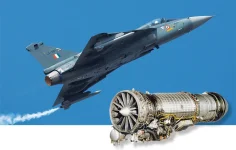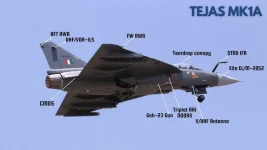- Views: 4K
- Replies: 3
India's Defence Research and Development Organisation (DRDO) is making significant strides in advanced weapons technology with its Dhvani Hypersonic Glide Vehicle (HGV) program.
The recent public display of a full-scale Dhvani model, measuring approximately 9 meters long and 2.5 meters wide, signals India's growing capabilities in the complex field of hypersonic systems, an area previously dominated by nations like the US, Russia, and China.
This development follows earlier successful tests within India's hypersonic technology program, such as the Hypersonic Technology Demonstrator Vehicle (HSTDV).
While official specifications remain confidential, information suggests the Dhvani HGV is being developed to possess a range far exceeding India's current Agni-V intercontinental ballistic missile (ICBM).
The Agni-V is widely recognized as having a range of around 5,500 kilometres. However, informed estimates indicate the Dhvani could potentially travel distances between 6,000 and 10,000 kilometres, effectively doubling the reach of India's current long-range missile systems.
The design showcased in the full-scale model features a blended wing body shape. This advanced aerodynamic configuration is known to offer superior lift compared to drag, especially at extreme speeds, surpassing traditional missile designs.
This enhanced efficiency is crucial for achieving long ranges and maintaining stability and control while travelling at hypersonic speeds, defined as speeds greater than Mach 5 (over 6,100 kilometres per hour).
Hypersonic Glide Vehicles like the Dhvani represent a new class of strategic weapon. Typically launched towards the upper atmosphere by a powerful booster rocket, the HGV then detaches and glides unpowered towards its target.
A key advantage of HGVs is their ability to perform manoeuvres during this glide phase, making their flight path unpredictable. Combined with their immense speed, this manoeuvrability makes them extremely difficult for current missile defence systems to track and intercept, thereby increasing their chances of reaching the intended target.
The significant potential increase in range for the Dhvani, compared to the established 5,500 km reach of the Agni-V ICBM, stems from its unique flight method.
The combination of an initial high-altitude boost followed by an extended, high-speed glide allows the vehicle to cover substantially greater distances than purely ballistic missiles.
Should the Dhvani achieve the estimated operational range of 6,000 to 10,000 kilometres, it would possess true intercontinental capability. This would enable India to potentially strike targets across vast geographical areas, including most of Asia, Europe, and potentially parts of North America, directly from Indian territory.
Such a capability would significantly bolster India's strategic deterrence posture and enhance its ability to project power globally, offering a rapid and precise means of delivering conventional or strategic payloads across immense distances.





